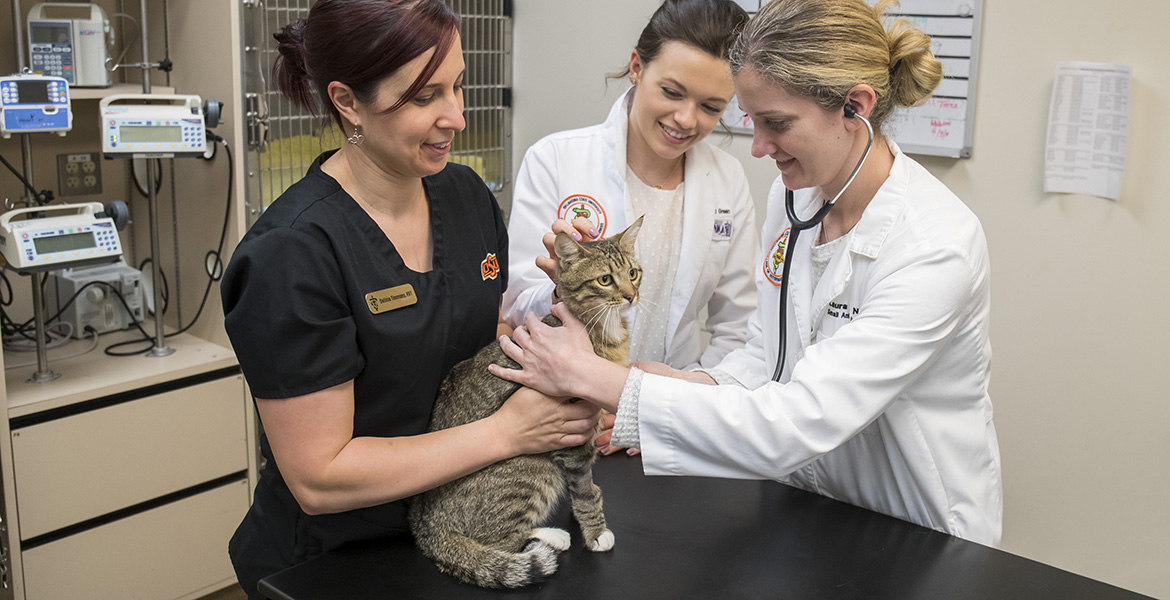
If it’s tick season, it’s bobcat fever season
Monday, July 20, 2020
If you have a cat who goes outdoors during the summer, keep a careful eye out for any ticks on it. A tick bite could cause cytauxzoonosis (bobcat fever), an acute, life-threatening disease caused by the hematoprotozoan parasite Cytauxzoon felis.
The most common scenario is that a tick feeds on a bobcat in the wild infected with cytauxzoon and then feeds on a domestic cat. As a result, two common risk factors for becoming infected with cytauxzoonosis are exposure to ticks (usually Amblyomma americanum also known as the Lone Star tick because of the single white mark visible on it) and geographical regions containing bobcats (commonly rural areas or houses that back up to wooded areas). Because ticks transmit this infection, cytauxzoonosis is a seasonal infection, with most cats becoming infected between March and September. There may be variations year to year in peak months based on temperature and rainfall.
Approximately 10-14 days after being bitten by an infected tick, the cat will become ill with non-specific symptoms of lethargy and decreased appetite. Occasionally cats will exhibit respiratory (heavy breathing, open-mouth breathing) or neurologic symptoms such as seizures. Infected cats will have a high fever (104-106°F) and may show signs of anemia (pale gums), jaundice (yellow discoloration to the skin due to a build-up of bilirubin in the blood), and/or bleeding.
Cytauxzoonosis results in a profound systemic inflammatory response throughout the body. The inflammation causes a high body temperature, increased respiratory rate, clotting abnormalities and damages various organ systems, including the liver, lungs, kidneys and brain. Blood clots often complicate the infection, which may reduce blood flow to vital organs. Without treatment, cytauxzoonosis frequently results in death within a few days of symptoms appearing.
Ordinary antibiotics administered to treat common infections are not effective against Cytauxzoon felis. Standard therapy is a combination of an antimalarial drug (atovaquone) and antimicrobial medication (azithromycin) in addition to supportive care to provide hydration and electrolyte balance, oxygen supplementation and nutritional support. Still, many cats do not survive.
Clinicians and scientists at OSU are investigating various aspects of this deadly infection to help improve survival rates. For example, a current clinical trial at OSU is investigating whether adding steroids to reduce inflammation may help. In addition, various researchers at OSU are studying different aspects of this disease from tick prevention methods to improved diagnostic methods.
Currently, a vaccine is not available to prevent Cytauxzoon felis. As a result, the best prevention is tick prevention. While this is primarily an infection of cats with outdoor access, ticks DO travel indoors, and therefore, both indoor and outdoor cats in Oklahoma should receive tick prevention year round. Combining multiple tick prevention products (when safe) may be recommended for cats with a high risk of tick exposure, especially in regions near wooded areas or forest, as the combination of bobcats (the natural host and carrier) and ticks are likely in these areas. Discuss tick prevention options with your veterinarian to ensure the product(s) you are using are safe for your cat and effective against prevention of Amblyomma americanum and transmission of Cytauxzoon felis.
If your cat is exhibiting signs that could be consistent with cytauxzoonosis, have your cat evaluated by a veterinarian immediately, as rapid intervention and treatment may improve its chances of survival. The Oklahoma State University Veterinary Medical Hospital is open 24 hours a day, and our veterinarians are trained to treat this life-threatening infection.
STORY BY: Laura Nafe, DVM, MS, DACVIM (SAIM), an associate professor of small animal internal medicine in the Department of Veterinary Clinical Sciences at the Oklahoma State University College of Veterinary Medicine.
